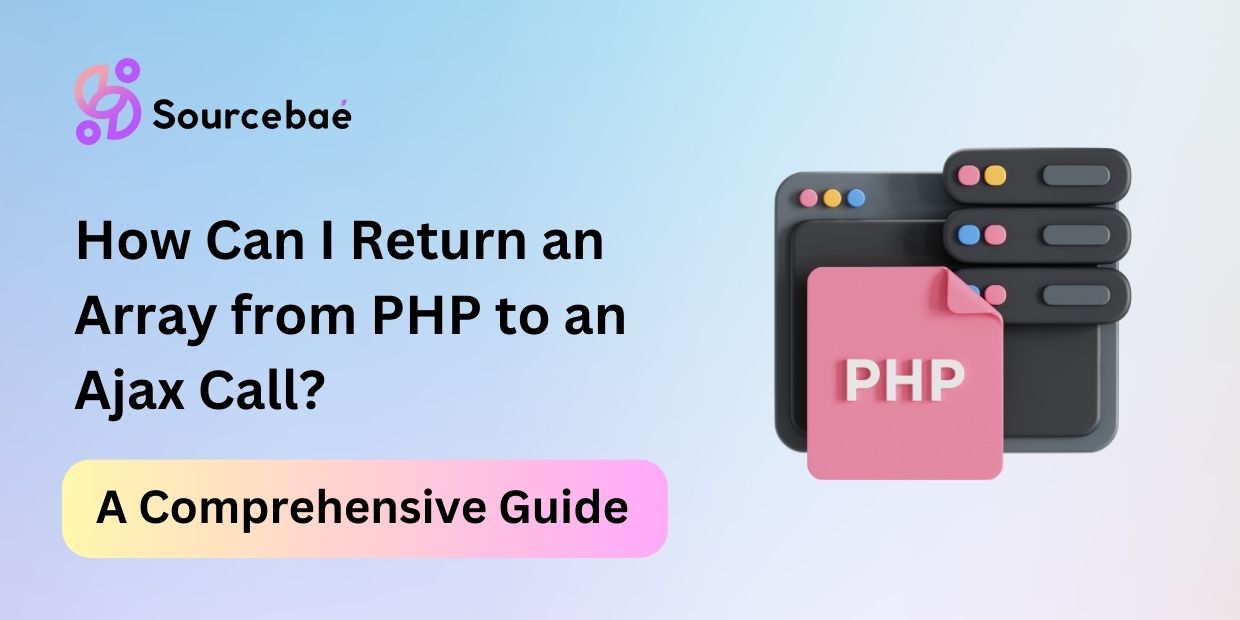In web development, PHP and Ajax are two essential tools for creating dynamic and interactive web applications. Often, you’ll find yourself needing to pass data, particularly arrays, from PHP to an Ajax call seamlessly. If you’re wondering how to do this effectively, you’ve come to the right place. This article deeply explores the techniques and best practices for returning an array from PHP to an Ajax call. Whether you’re a seasoned developer or just starting your journey, this guide will equip you with the knowledge and skills to tackle this common challenge.
Understanding the Basics
Let’s begin by clarifying the fundamental concepts involved in this process:
What is PHP?
PHP, which stands for Hypertext Preprocessor, is a server-side scripting language widely used for web development. It allows you to embed dynamic content within HTML pages, making it a powerful tool for creating web applications.
What is Ajax?
Ajax, or Asynchronous JavaScript and XML, is a set of web development techniques that enable you to create interactive and responsive web applications. It allows you to exchange data with the server without having to reload the entire page.
Using PHP to Create an Array
Before you can return an array, you must first create one in PHP:
<?php
// Create an example array
$myArray = array("apple", "banana", "cherry");
?>Sending Data to Ajax
Now, let’s explore how to send this array to an Ajax call.
Setting Up the Ajax Request
In your HTML file, create an Ajax request. You can use JavaScript to achieve this:
var xhttp = new XMLHttpRequest();Defining the Ajax Callback Function
You need to define a callback function that will handle the response from the server:
xhttp.onreadystatechange = function() {
if (this.readyState == 4 && this.status == 200) {
// Code to handle the response here
}
};Returning the Array from PHP
To return the array from PHP to the Ajax call, you can use the json_encode function. This function converts a PHP variable into a JSON string, which can be easily processed by JavaScript.
<?php
// Create an example array
$myArray = array("apple", "banana", "cherry");
// Encode the array as JSON
$jsonArray = json_encode($myArray);
// Return the JSON data
echo $jsonArray;
?>Processing the Array in Ajax
In the callback function of your Ajax request, you can now process the array returned from PHP:
xhttp.onreadystatechange = function() {
if (this.readyState == 4 && this.status == 200) {
// Parse the JSON response
var responseArray = JSON.parse(this.responseText);
// Use the array data as needed
console.log(responseArray);
}
};Troubleshooting Common Issues
Handling Errors
Sometimes, things may not go as smoothly as planned. Here are some common issues and their solutions:
Cross-Origin Resource Sharing (CORS) Errors
If your Ajax request fails due to CORS issues, you’ll need to configure your server to allow cross-origin requests. This is typically done by setting appropriate headers in your PHP script.
Syntax Errors
Check your PHP and JavaScript code for syntax errors. Even a small typo can cause unexpected behavior.
FAQs
How can I pass a multidimensional array from PHP to Ajax?
You can follow the same steps outlined above. The function converts your multidimensional array into a JSON string before returning it from PHP. In your JavaScript code, parse the JSON response to access the data.
Are there any security considerations when passing data from PHP to Ajax?
Security is crucial when exchanging data between the server and the client. Continuously validate and sanitize user input to prevent security vulnerabilities like SQL injection or cross-site scripting (XSS) attacks.
Can I return other data types besides arrays?
Absolutely! Using the same principles, you can return various data types, such as strings, integers, or even objects. Just make sure to encode your data appropriately in PHP and parse it correctly in JavaScript.
Is there a limit to the size of the array I can return?
The array size you can return depends on server and client constraints. However, keeping your data payload reasonable is a good practice to ensure optimal performance.
Can I use libraries or frameworks to simplify this process?
Yes, many JavaScript libraries and PHP frameworks provide convenient functions for handling Ajax requests and data serialization. Explore options like jQuery or Laravel if you want to streamline your workflow.
What are some real-world use cases for returning arrays from PHP to Ajax?
Returning arrays is common when fetching data from a database, handling form submissions, or updating dynamic web content without requiring a full page reload.
Conclusion
Returning an array from PHP to an Ajax call is a fundamental skill for web developers. Following the steps outlined in this guide and considering the FAQs, you’ll be well-equipped to handle this task efficiently and securely. As you gain experience, you’ll find creative ways to leverage this knowledge in your web development projects.
READ MORE: Is ABAP being replaced by Java in SAP?






